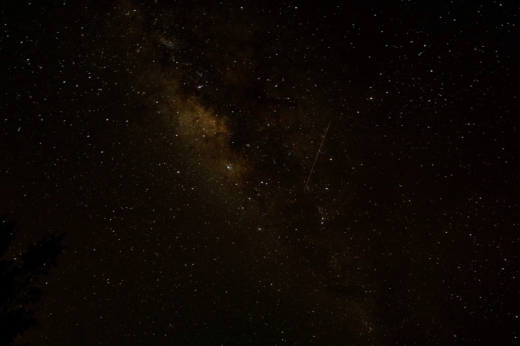The annual Perseid meteor shower has begun lighting up the skies and will continue to captivate stargazers through the end of August.
Recognized as the most spectacular meteor shower of the year, the Perseids are best viewed during the pre-dawn hours, but visibility begins as early as 10 p.m.
The shower’s meteors are known for their brightness and speed. They often leave vivid trails of light and color as they burn through Earth’s atmosphere, according to NASA.
The meteor shower is not only famous for its beauty but also for its intensity that can produce an average of 50 to 100 meteors visible per hour, NASA said.
Fireballs may be seen as part of the shower. They can produce flashes of light and color last longer than an average meteor streak because they originate from bigger fragments of cometary material.
The Perseids owe their name to the point from which they appear to hail in the sky, which is near the constellation Perseus, named after the Greek hero.
The debris that creates the Perseid meteor shower originates from comet 109P/Swift-Tuttle that was discovered in 1862 by astronomers Lewis Swift and Horace Tuttle.
The comet, which takes 133 years to orbit the sun, last visited the inner solar system in 1992. It has a massive nucleus that measures 16 miles across, which is nearly twice the size of the asteroid believed to have contributed to the extinction of the dinosaurs.
Experts recommend that viewers find a spot away from city lights and look northward to improve their viewing experience.
Here are some tips for the best viewing experience of a meteor shower:
- Find a Dark Location: Choose a spot far away from city lights. Darker skies will allow you to see more meteors.
- Allow Your Eyes to Adjust: Give your eyes about 30 minutes to adapt to the darkness. This will help you spot fainter meteors.
- Avoid Light Pollution: Turn off your smartphone and any other light sources. This will help maintain your night vision.
- Look North: For many meteor showers, including the Perseids, the best direction to watch is towards the north.
- Check the Weather: Make sure the skies will be clear on the night you plan to observe.
- Be Patient: Meteor watching can be a waiting game, so be prepared to relax and enjoy the night sky.
- Use Apps Wisely: If you need to use a stargazing app, make sure it has a night mode to prevent your phone’s screen from disrupting your night vision.
- Know the Peak: Meteor showers often have a peak activity period, which is the best time to watch. Plan your viewing around these peak times.









